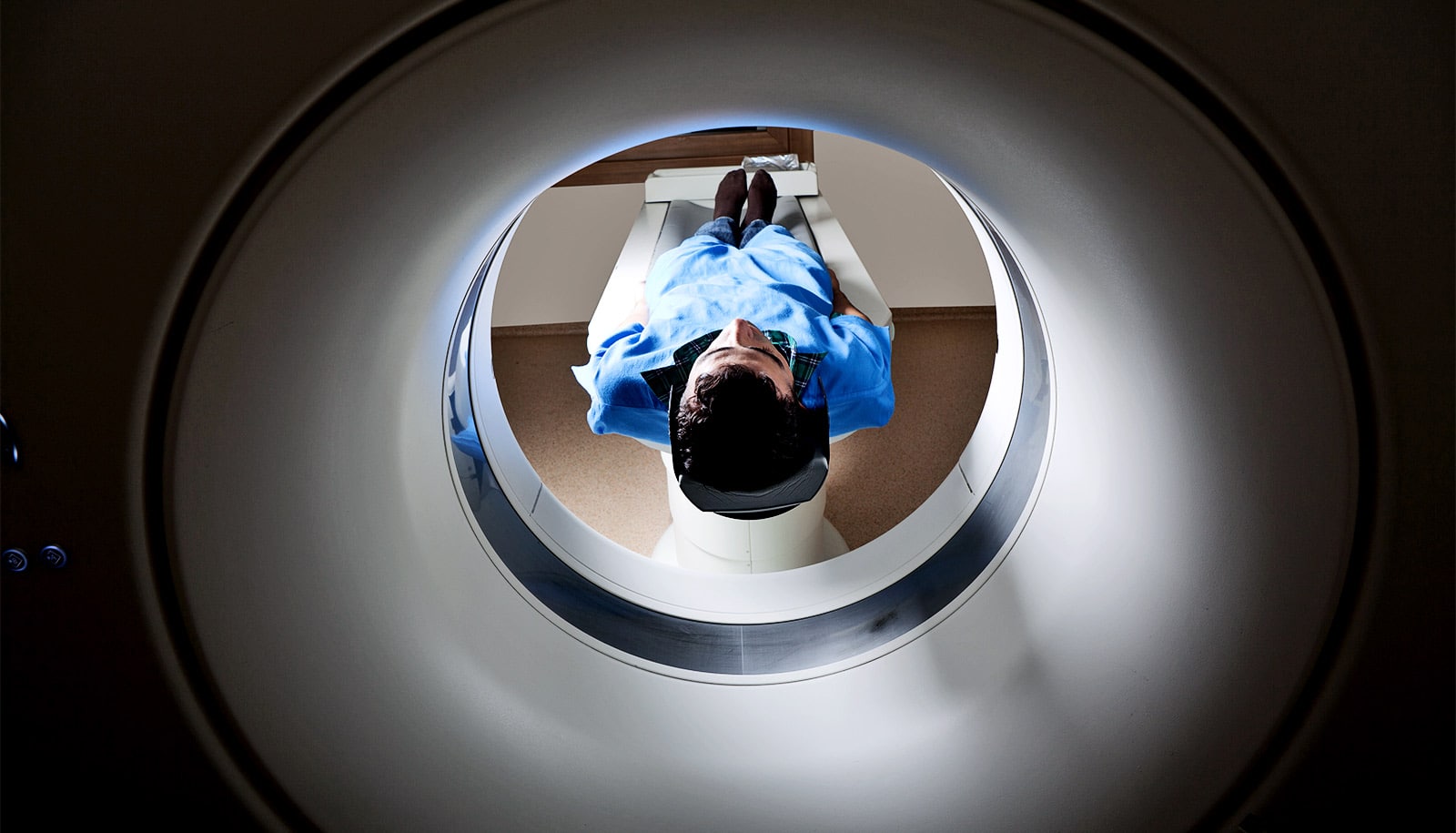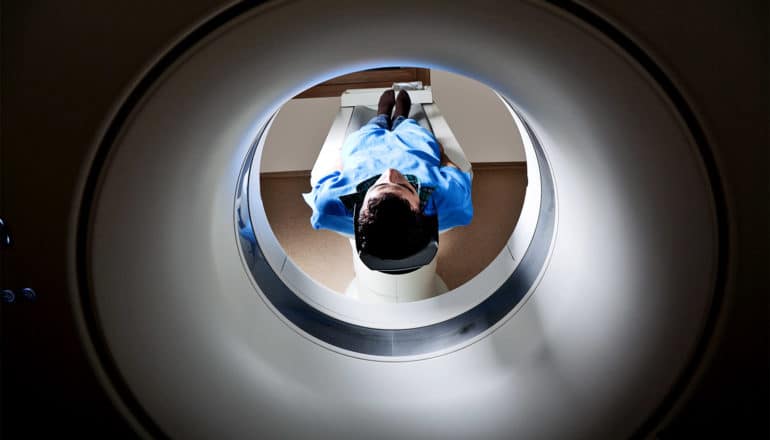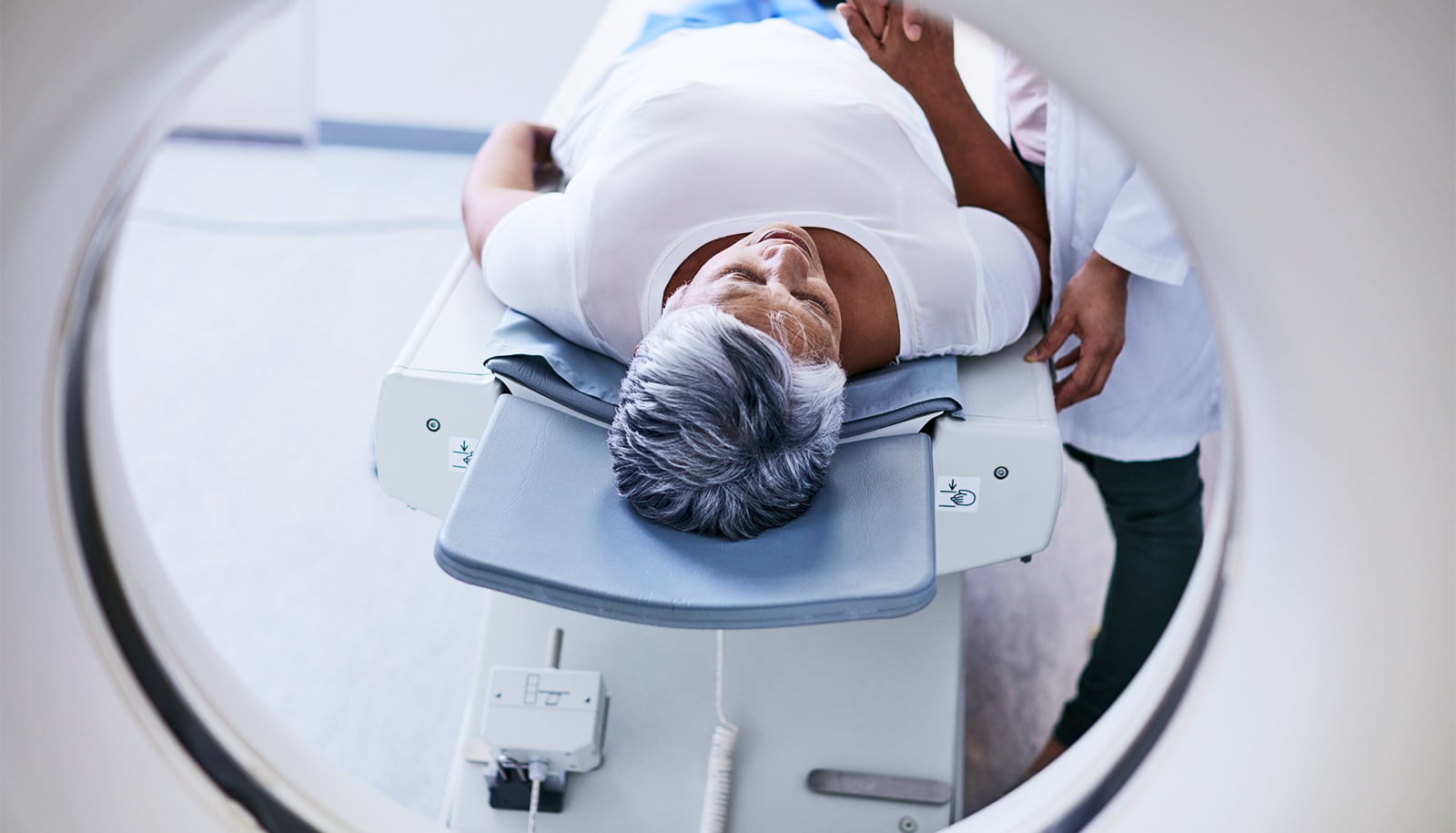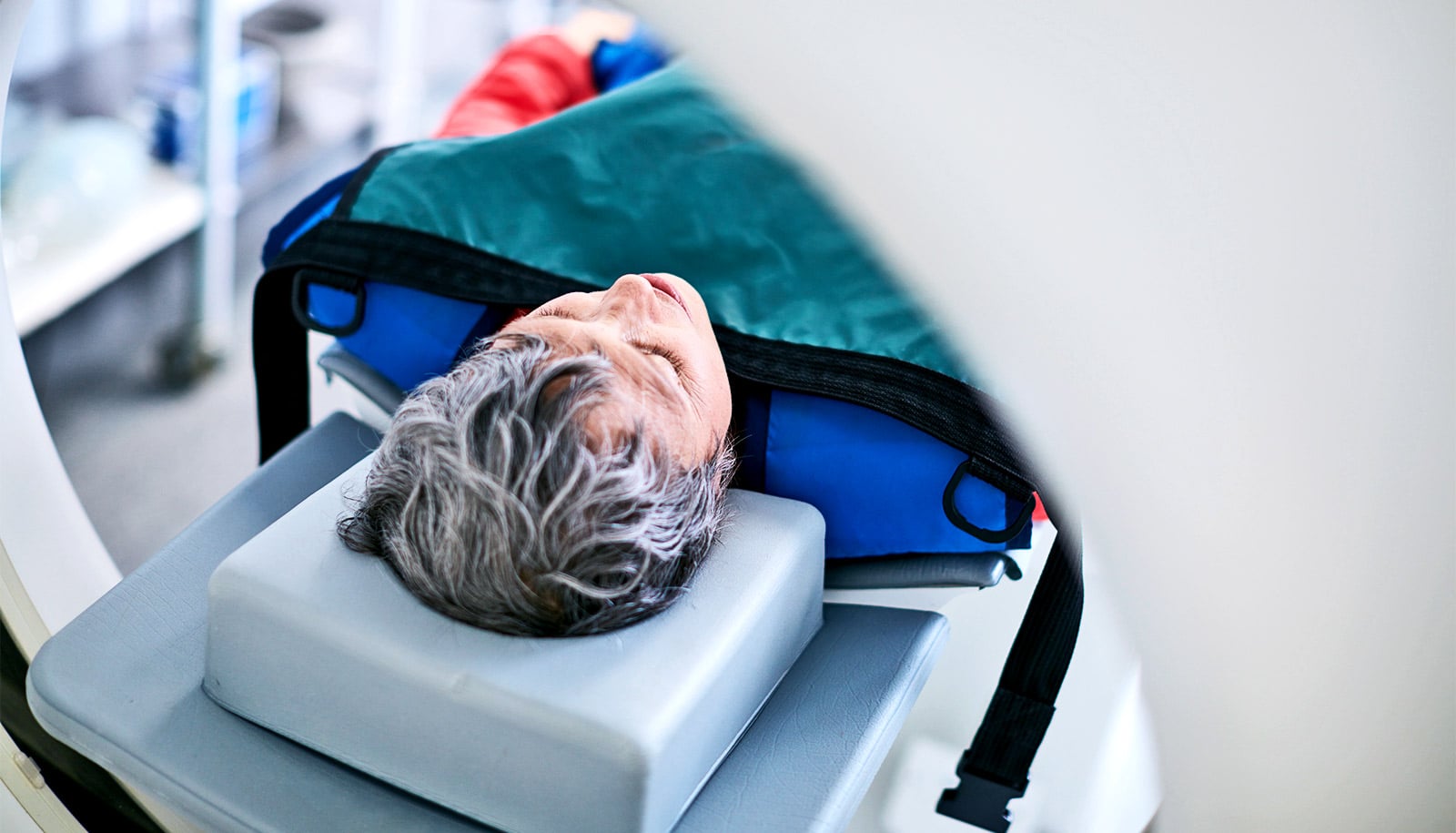
(Credit: Getty Images )
Safer MRI contrast agent may detect early-stage liver disease
A new contrast agent can detect liver fibrosis tumors 100 times smaller than currently approved agents—and reduces risk of toxicity, too.

A safer and more sensitive contrast agent for MRI tests may provide the first effective, noninvasive method for detecting and diagnosing early-stage liver diseases, including liver fibrosis, researchers say.
“It’s a revolutionary change for the field as the first robust detection of the early stage of liver fibrosis,” says Jenny Yang, professor in chemistry at Georgia State University and the associate director of the university’s Center for Diagnostics and Therapeutics.
“This would help doctors monitor treatment before it is irreversible and help pharmaceutical companies to select the right patients for clinical trials or identify subjects for drug discovery.”
A paper on the research appears in Nature Communications.
Lower dose contrast agent
The dyes used in MRI tests, referred to as contrast agents, are substances that enhance the visibility of internal body structures during magnetic resonance imaging. The new, patented contrast agent, called ProCA32.collagen1, targets overexpression of the biomarker collagen during the disease state and binds tightly with the contrast metal gadolinium.
Tests in animal models show the protein-based ProCA32.collagen1 can detect the early stage of alcohol-induced liver fibrosis and Non-Alcoholic SteatoHepatitis, which is the most severe form of non-alcohol fatty liver disease.
The findings also demonstrate the substance is twice as accurate as conventional contrast agents, and can detect tumors as small as 0.1 to 0.2 millimeters—100 times smaller than tumors detected by currently-approved contrast agents. Because it requires a significantly lower dosage than standard contrast agents, it reduces the risk of metal toxicity.
Spike in chronic liver disease
From 2010 to 2015, deaths from chronic liver disease increased 31% in the US among people ages 45 to 64, due to several factors, including alcohol abuse and obesity. Liver disease is a slow-moving process, but without an effective, non-invasive means of early diagnosis to prompt treatment, it can progress to more serious stages with severe consequences.
“Most people do not believe they have liver fibrosis and don’t want to change their lifestyle and we cannot detect it early,” Yang says. “So, what happens is, they continue their lifestyle and at some point develop later-stage fibrosis which can become severe cirrhosis and a large portion become liver cancer.”
ProCA32.collagen1’s black-and-white contrast imaging can differentiate “invisible” fibrotic regions from healthy background tissue, overcoming the limitations of invasive biopsies that can’t analyze the entire liver.
“Our contrast agent can do dual color so you have different contrast-colored features so the sensitivity shows up better and accuracy is a lot better,” Yang says.
In collaboration with Hans Grossniklaus, the director of ocular oncology and pathology at Emory University, Yang’s group also demonstrated that ProCA32.collagen1 may be effective at early detection of cancerous microtumors as small as 0.144 millimeters that have spread to the liver from other areas of the body. The research appears in Biomaterials.
The next step is to gain approval from the Food and Drug Administration to conduct clinical trials at Emory University Hospital.
Researchers developed the contrast agent in collaboration with Yang’s start-up company, InLighta BioSciences. Additional researchers from Emory University, the University of Georgia, Augusta University, and Georgia State contributed to the paper. The National Institute of Health’s National Institute on Alcohol Abuse and Alcoholism funded the work.
Source: Georgia State University
The post Safer MRI contrast agent may detect early-stage liver disease appeared first on Futurity.
Share this article:
This article uses material from the Futurity article, and is licenced under a CC BY-SA 4.0 International License. Images, videos and audio are available under their respective licenses.
Related Articles:
New MRI method brings multiple sclerosis into sharper view
Feb. 12, 2024 • futurityEarly detection could get ahead of dementia damage
May 19, 2019 • futurityLinks/images:
- https://www.futurity.org/liver-cells-map-2129202-2/
- https://www.nature.com/articles/s41467-019-11984-2
- https://www.futurity.org/mri-contrast-iron-1845782-2/
- https://www.futurity.org/biopsies-stamp-cancer-cells-2166102-2/
- https://doi.org/10.1016/j.biomaterials.2019.119478
- https://news.gsu.edu/2019/10/29/mri-contrast-agent/
- https://www.futurity.org/contrast-agent-liver-disease-mri-2198662/
- https://www.futurity.org


